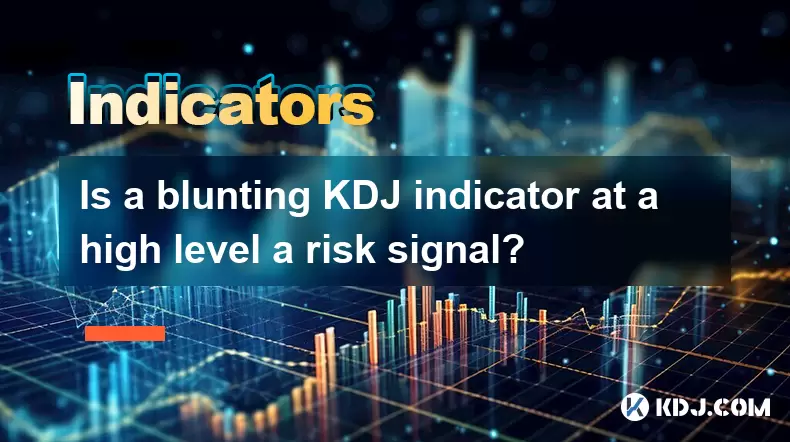-
 Bitcoin
Bitcoin $114800
-0.70% -
 Ethereum
Ethereum $4740
0.44% -
 XRP
XRP $3.018
-0.53% -
 Tether USDt
Tether USDt $0.9998
0.02% -
 BNB
BNB $863.0
-2.82% -
 Solana
Solana $205.2
1.19% -
 USDC
USDC $0.9999
0.00% -
 Dogecoin
Dogecoin $0.2303
-2.43% -
 TRON
TRON $0.3651
1.10% -
 Cardano
Cardano $0.8937
-2.19% -
 Chainlink
Chainlink $25.42
-0.96% -
 Hyperliquid
Hyperliquid $43.50
-0.67% -
 Sui
Sui $3.626
-2.57% -
 Stellar
Stellar $0.4055
-1.60% -
 Ethena USDe
Ethena USDe $1.000
0.01% -
 Bitcoin Cash
Bitcoin Cash $594.8
1.30% -
 Avalanche
Avalanche $25.04
-3.00% -
 Hedera
Hedera $0.2452
-1.68% -
 Litecoin
Litecoin $119.1
-1.96% -
 UNUS SED LEO
UNUS SED LEO $9.596
0.24% -
 Toncoin
Toncoin $3.331
-0.83% -
 Shiba Inu
Shiba Inu $0.00001277
-3.18% -
 Uniswap
Uniswap $10.94
-2.43% -
 Polkadot
Polkadot $4.044
-2.07% -
 Dai
Dai $0.0000
0.01% -
 Bitget Token
Bitget Token $4.670
-1.72% -
 Cronos
Cronos $0.1568
1.20% -
 Aave
Aave $346.1
-1.00% -
 Monero
Monero $269.5
0.15% -
 Ethena
Ethena $0.6950
-6.51%
Is a blunting KDJ indicator at a high level a risk signal?
When the KDJ indicator blunts at high levels—showing price rises but KDJ stalls—it signals weakening momentum and a potential reversal, especially in volatile crypto markets.
Aug 12, 2025 at 07:00 am

Understanding the KDJ Indicator in Cryptocurrency Trading
The KDJ indicator is a momentum oscillator widely used in cryptocurrency trading to identify overbought and oversold conditions. It consists of three lines: the %K line (fast stochastic), the %D line (slow stochastic), and the %J line (a divergence value). The %K line reflects the current closing price relative to the price range over a specific period, usually 9 periods. The %D line is a moving average of %K, providing smoothing. The %J line is calculated as 3×%K – 2×%D, making it more sensitive and volatile.
In the context of cryptocurrency markets, where price swings are frequent and sharp, the KDJ helps traders anticipate reversals. When the KDJ values rise above 80, the asset is generally considered overbought. Conversely, values below 20 suggest oversold conditions. However, interpreting these signals requires deeper analysis, especially when the indicator shows signs of blunting while at high levels.
What Does Blunting Mean in the KDJ Indicator?
Blunting occurs when the KDJ lines stop rising despite continued upward movement in price. This divergence indicates weakening momentum. In a healthy uptrend, rising prices should be accompanied by rising KDJ values. When the %K and %D lines plateau or turn sideways near the overbought zone (above 80), it suggests that buying pressure is diminishing.
This phenomenon is particularly significant in volatile markets like cryptocurrency. For example, if Bitcoin’s price climbs from $60,000 to $65,000 but the KDJ fails to exceed its previous peak, this blunting signals that the rally may lack strength. The %J line, being the most volatile, often flattens or dips first, acting as an early warning. Traders should monitor whether the %K line crosses below the %D line during this phase, which may confirm a bearish signal.
Interpreting High-Level Blunting as a Risk Signal
When the KDJ indicator blunts at a high level, it often precedes a price correction or reversal. This is because the market may have exhausted its buying momentum. In cryptocurrency trading, such signals are critical due to the asset class’s susceptibility to rapid sentiment shifts.
Consider a scenario where Ethereum reaches a new high, but the KDJ remains capped around 85 without breaking higher. This failure to confirm the new price high suggests a bearish divergence. The %K line may start to descend while the %D line follows, indicating that short-term momentum is fading. If the %J line drops below 100, it reinforces the weakening trend.
Traders should not act on this signal in isolation. It is essential to cross-verify with volume indicators. A decline in trading volume during price increases supports the blunting signal, suggesting lack of conviction. Additionally, checking for resistance levels on the price chart can provide context—blunting near a known resistance enhances the risk signal.
How to Respond to a Blunting KDJ at High Levels
When a blunting KDJ at a high level is detected, traders can take several precautionary steps:
- Reduce long exposure: If holding a long position, consider taking partial profits. This limits downside risk if a reversal occurs.
- Set tighter stop-loss orders: Adjust stop-loss levels below recent swing lows to protect capital.
- Watch for confirmation signals: Wait for the %K line to cross below the %D line within the overbought zone. This crossover strengthens the bearish case.
- Monitor price action: Look for rejection patterns such as shooting stars or bearish engulfing candles at resistance.
- Use complementary indicators: Combine with RSI (Relative Strength Index) or MACD to confirm loss of momentum. If RSI also shows divergence, the risk increases.
For active traders, this setup may present a shorting opportunity. However, entering a short position should only occur after confirmation, such as a decisive break below a key support level accompanied by rising volume.
Common Misinterpretations and Pitfalls
A major mistake is assuming that any KDJ value above 80 is a sell signal. In strong bullish trends, the KDJ can remain overbought for extended periods. For instance, during a crypto bull run, Bitcoin might stay above $50,000 while the KDJ hovers near 90 for weeks. Premature shorting based solely on overbought readings can lead to losses.
Another pitfall is ignoring the timeframe. A blunting signal on a 1-hour chart may not carry the same weight as one on a daily chart. Higher timeframes provide more reliable signals. Additionally, low liquidity altcoins may produce false KDJ signals due to price manipulation or thin order books.
Traders must also distinguish between temporary consolidation and true blunting. A brief pause in KDJ rise after a sharp rally may just be a rest before continuation. The key is whether the price continues to make higher highs while KDJ fails to do so—this confirms divergence.
Practical Example: Analyzing Blunting in Binance Coin (BNB)
Suppose BNB rises from $280 to $320 over ten days. During this move, the daily KDJ climbs from 50 to 88. However, in the next three days, the price pushes to $330, but the KDJ stalls at 87 and begins to decline. The %K line crosses below %D at 86, and the %J line drops from 105 to 95.
Volume data shows that the final leg up occurred on lower volume, confirming weak participation. Simultaneously, BNB approaches a historical resistance at $335. This confluence of factors—KDJ blunting, bearish crossover, low volume, and resistance—forms a high-probability risk signal. A trader might choose to exit long positions or initiate a short with a stop-loss above $337.
FAQs
Q: Can the KDJ indicator give false blunting signals in crypto markets?
Yes. Due to the high volatility and frequent pump-and-dump patterns in cryptocurrencies, the KDJ can show temporary blunting during consolidation phases that are not followed by reversals. This is more common in low-market-cap tokens. Using volume analysis and multi-timeframe confirmation helps filter out false signals.
Q: How long should I wait for confirmation after noticing KDJ blunting?
There is no fixed duration. Monitor for a clear %K/%D crossover below the 80 level or a break of a recent price support. If the price remains range-bound without confirmation for more than 3–5 candles (depending on timeframe), the signal may lose relevance.
Q: Should I use KDJ alone or with other tools?
Never rely on KDJ alone. Combine it with volume indicators, moving averages, and support/resistance levels. For example, a blunting KDJ at a Fibonacci 61.8% retracement level carries more weight than one in open space.
Q: Does blunting KDJ work the same on all timeframes?
No. On shorter timeframes like 5-minute or 15-minute charts, market noise increases, leading to more frequent but less reliable blunting signals. The daily and 4-hour charts offer more meaningful readings for swing and position traders.
Disclaimer:info@kdj.com
The information provided is not trading advice. kdj.com does not assume any responsibility for any investments made based on the information provided in this article. Cryptocurrencies are highly volatile and it is highly recommended that you invest with caution after thorough research!
If you believe that the content used on this website infringes your copyright, please contact us immediately (info@kdj.com) and we will delete it promptly.
- Crypto Crossroads: Dogecoin, Stellar, and the Search for 2025's Top Coin
- 2025-08-24 19:25:32
- Bitcoin Price Swings, BTC News & Remittix: What's Hot Now?
- 2025-08-24 18:45:35
- Cryptos, Market Cap, 2025 Potential: Spotting the Next Big Thing
- 2025-08-24 16:45:35
- Shiba Inu vs. Layer Brett: Price Prediction and the Meme Coin Evolution
- 2025-08-24 17:05:29
- Dogecoin Price Prediction: Will DOGE Bark or Bite?
- 2025-08-24 17:45:26
- XRP Price: Analyst Prediction of $7-$8 in Few Weeks?
- 2025-08-24 17:45:26
Related knowledge

What does it mean when the +DI and -DI cross frequently in the DMI indicator but the ADX is flattening?
Aug 11,2025 at 03:15am
Understanding the DMI Indicator ComponentsThe Directional Movement Index (DMI) is a technical analysis tool composed of three lines: the +DI (Positive...

What does the sudden appearance of a "dark cloud cover" candlestick pattern during an uptrend indicate?
Aug 13,2025 at 11:35am
Understanding the 'Dark Cloud Cover' Candlestick PatternThe dark cloud cover is a bearish reversal pattern in technical analysis that typically appear...

What does it mean when the moving average, MACD, and RSI all send buy signals simultaneously?
Aug 11,2025 at 01:42pm
Understanding the Convergence of Technical IndicatorsWhen the moving average, MACD, and RSI all generate buy signals at the same time, traders interpr...

What does it mean when both the KDJ indicator and the RSI show overbought signals simultaneously?
Aug 13,2025 at 11:35am
Understanding the KDJ Indicator in Cryptocurrency TradingThe KDJ indicator is a momentum oscillator derived from the Stochastic Oscillator, widely use...

What does it mean when the price is trading above the SAR indicator but the red dots are densely packed?
Aug 09,2025 at 11:49pm
Understanding the SAR Indicator and Its Visual SignalsThe SAR (Parabolic Stop and Reverse) indicator is a technical analysis tool used primarily to de...

What does it mean when the candlestick chart forms a "Morning Star" but trading volume is sluggish?
Aug 12,2025 at 06:28pm
Understanding the Morning Star Candlestick PatternThe Morning Star is a three-candle bullish reversal pattern commonly observed in cryptocurrency pric...

What does it mean when the +DI and -DI cross frequently in the DMI indicator but the ADX is flattening?
Aug 11,2025 at 03:15am
Understanding the DMI Indicator ComponentsThe Directional Movement Index (DMI) is a technical analysis tool composed of three lines: the +DI (Positive...

What does the sudden appearance of a "dark cloud cover" candlestick pattern during an uptrend indicate?
Aug 13,2025 at 11:35am
Understanding the 'Dark Cloud Cover' Candlestick PatternThe dark cloud cover is a bearish reversal pattern in technical analysis that typically appear...

What does it mean when the moving average, MACD, and RSI all send buy signals simultaneously?
Aug 11,2025 at 01:42pm
Understanding the Convergence of Technical IndicatorsWhen the moving average, MACD, and RSI all generate buy signals at the same time, traders interpr...

What does it mean when both the KDJ indicator and the RSI show overbought signals simultaneously?
Aug 13,2025 at 11:35am
Understanding the KDJ Indicator in Cryptocurrency TradingThe KDJ indicator is a momentum oscillator derived from the Stochastic Oscillator, widely use...

What does it mean when the price is trading above the SAR indicator but the red dots are densely packed?
Aug 09,2025 at 11:49pm
Understanding the SAR Indicator and Its Visual SignalsThe SAR (Parabolic Stop and Reverse) indicator is a technical analysis tool used primarily to de...

What does it mean when the candlestick chart forms a "Morning Star" but trading volume is sluggish?
Aug 12,2025 at 06:28pm
Understanding the Morning Star Candlestick PatternThe Morning Star is a three-candle bullish reversal pattern commonly observed in cryptocurrency pric...
See all articles

























































































